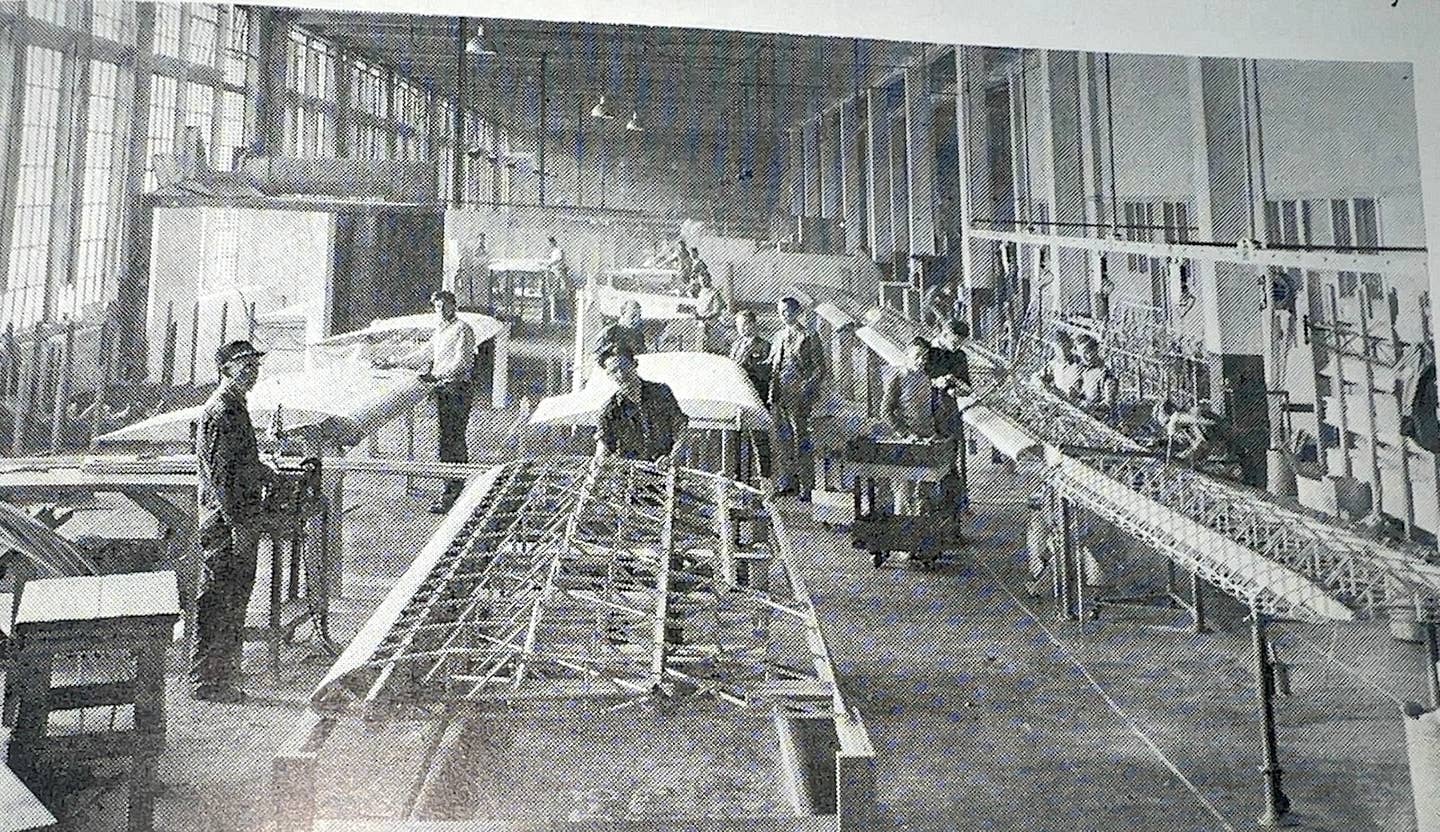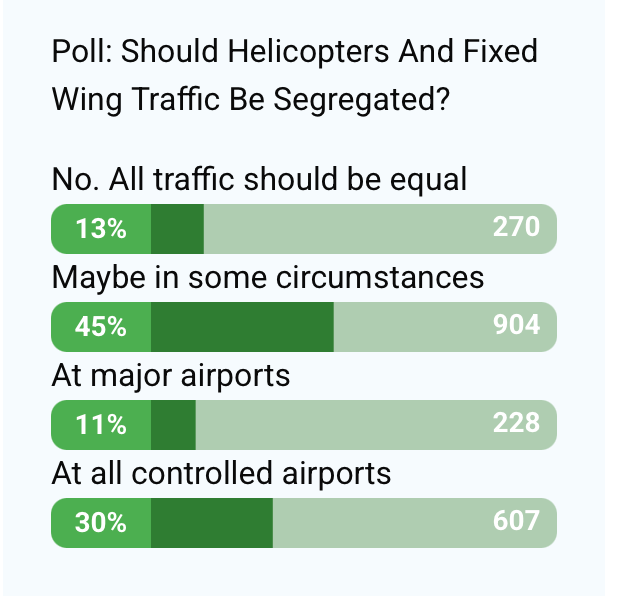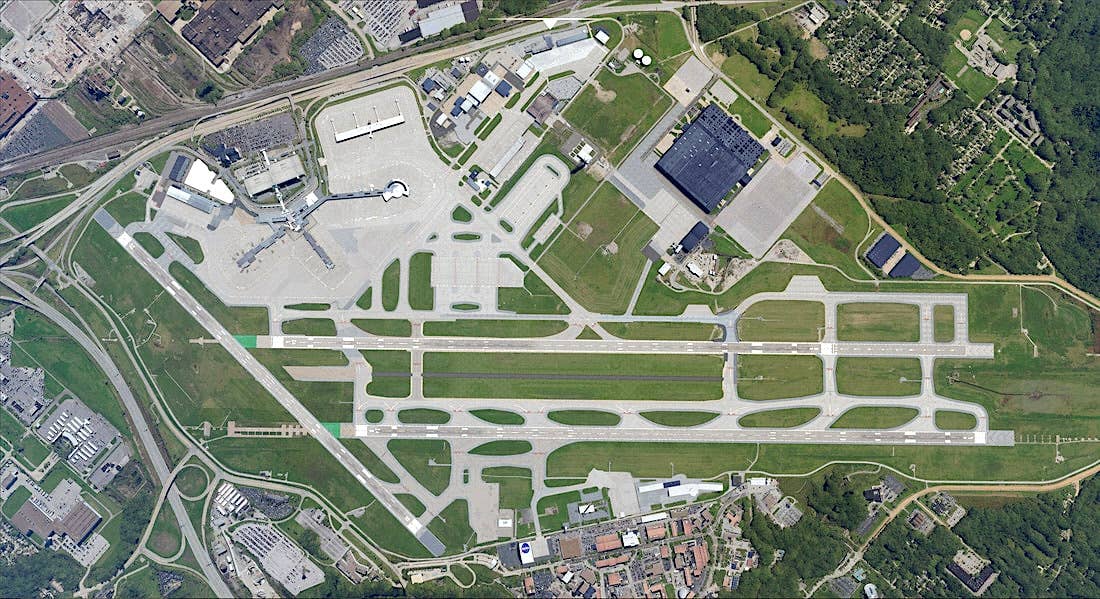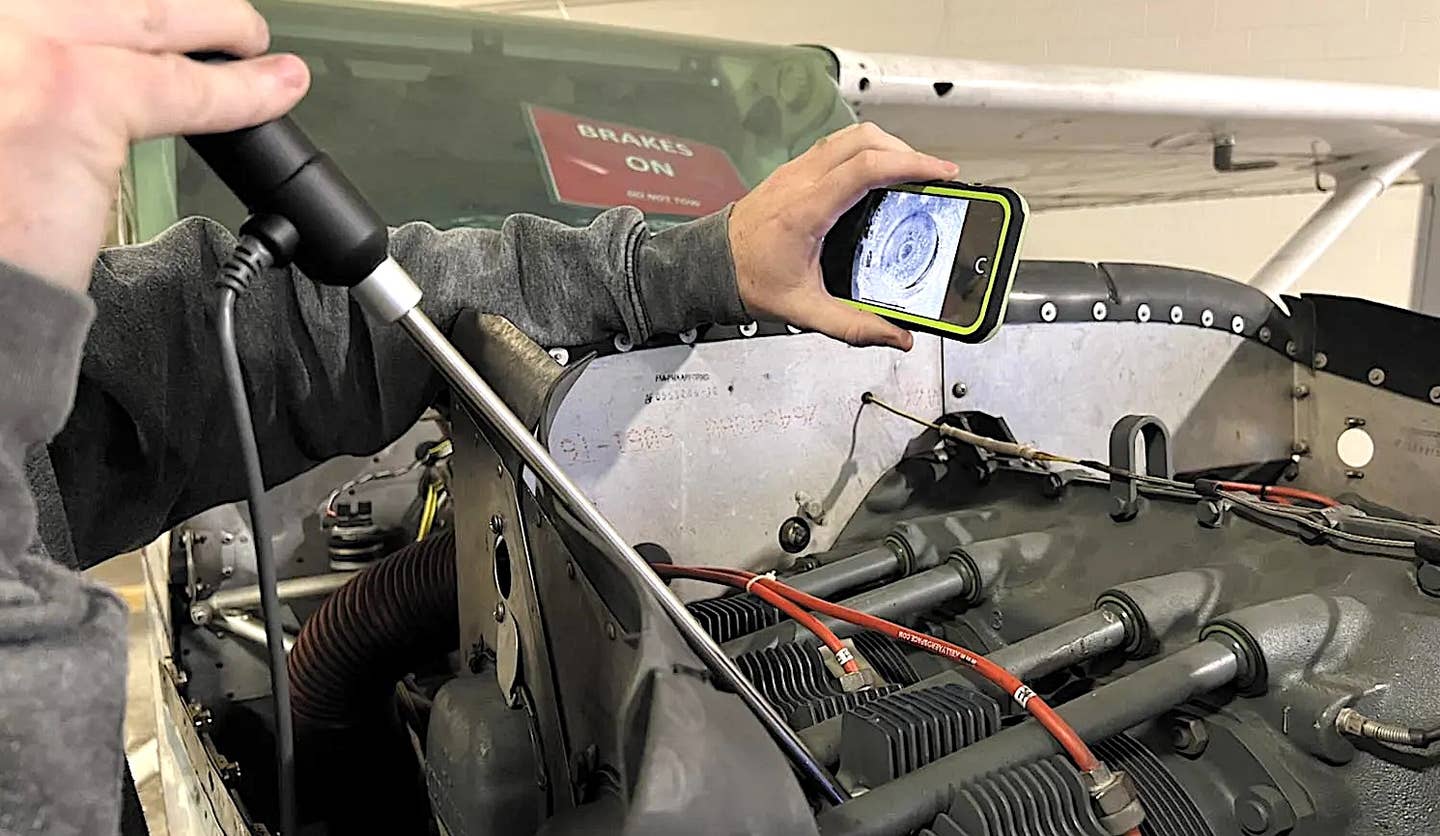Betty Darst
Which Wright brother suffered from depression? Which was fastidious and which was messy? Which parent got them interested in engineering? Why were they pressured to fly in mid-December? Betty Darst can tell you. A lifelong educator, Betty is an Adjunct Professor at Wright State University, and has spent the last 17 years entertaining audiences with her living biography as Katharine Wright, Orv and Wil’s younger sister. In this month’s Profile Betty talks with AVweb‘s Joe Godfrey about the influence of mom, dad, the brothers and Katharine on the two men who changed history on December 17, 1903.
Betty Darst was born November 11, 1939, in Gomer, Ohio. Like all Buckeyes -- your author included -- she got a healthy dose of Wright pride growing up. Then, in 1979 she moved to Dayton, just a few blocks from the Hawthorn Hill, the Wright home. She's a lifelong educator, specializing in teacher training and library sciences, and her interest in the Wright family led her to research generations of letters, diaries, family records and surviving descendants of the Wrights. In 1985 she took her research a step further with her living biography -- the concept behind Williamsburg, Virginia -- of Katharine Wright, Orv and Wil's younger sister. She greets her audience in a copy of a 1909 Homecoming suit worn by Katharine as she greeted her brothers' return from Europe. Lucky for us, the Wrights were diarists and photographers. Orv and Wil's father kept diaries for over 60 years. Katharine wrote letters -- almost daily -- to her father detailing the progress of her brothers. Betty's research has uncovered a priceless collection of letters and pictures that she uses in her multimedia slide presentation. Amazingly, there's no script to her presentation -- she does it all from memory.
Betty portrayed Katharine at AirVenture Oshkosh '02, and you can bet she'll be busy with Centennial celebrations in '03. She books her appearances through The Aviation Speakers Bureau. Betty recently retired as Director of Library Media Services of the Springfield, Ohio, City Schools, but she's still an Adjunct Professor at Wright State University, teaching graduate students and helping them use the online library of Wright memorabilia. She just finished teaching a children's literature workshop and was featured at a technology conference for 3000 educators entitled Connecting the Magic of the Web to the Wonder of the Book -- Integrating the Web and Print. Betty is listed in Who's Who in America for 2003, serves on the board for First to Fly, and was a major contributor to the Handbook of Facts on the Wright Brothers published by the National Park Service. Betty is a student pilot and is happy to navigate from the right seat while her husband Jack pilots their Piper Arrow.
Since we're in the middle of the holiday season, set the scene at the Wright home during Christmas of 1902 -- the year before their first flight.
The holidays were important to the Wrights and much of their support system came from the family setting. The members of the Wright family seemed to bring out a wonderful sense of humor in each other. Around the house they teased each other a lot and were very close, but were shy in public. Mom Wright -- Susan -- was the mathematical genius of the family. Her father came from Germany and was a carriage maker in Southern Indiana, and she taught her own children how to design and build sleds. She had attended Hartville College in Indiana, which is where she met Dad Wright -- Milton. He was a bishop in the United Brethren Church, and he would often preach on Christmas morning and be home in time for dinner with the family.
Christmas was especially important in the Wright household and in 1903 Wil and Orv made a determined effort to fly on December 17th so they could be back home in Dayton in time for Christmas. On New Year's Day the Bishop would give everyone their allowance for the year, and Katharine got 50 cents for the year for doing the dishes. When Wil and Orv were younger their mother taught them to cook and they and their sister Katharine did a lot of cooking as their mother's health deteriorated. Mom Wright died of consumption -- what we now call tuberculosis -- and Wil was her nurse during her final years.
 | |
| Katharine Wright |
Cooking is a skill that helped Orv and Wil at Kitty Hawk when they didn't have the quality of food they had back home in Dayton. In fact, they lost a lot of weight during their stay in Kitty Hawk for that reason. Their mother also taught them to sew, and they stitched the fabric on the Kitty Hawk Flyer. In addition to her "hands on" skills -- cooking, canning, and sewing and engineering simpler ways to do things around the home -- she also critiqued Bishop Wright's sermons. He felt that if she didn't like it, other folks probably wouldn't like it either.
It was a family of high expectations and there was good synergy. There was a tremendous synergy between Wil and Orv -- I believe that had they not had each other, they wouldn't have accomplished what they did. They were demanding of each other and kept one another focused on what they were doing. They flipped a coin for the first flight, because it wasn't that important to them which one went first. They had a joint checking account. Milton's gifts were record keeping -- he kept a diary for nearly 60 years -- and as he travelled preaching in churches throughout Ohio and Indiana, he expected Katharine to write him a daily letter letting him know how Wil and Orv were doing. Between his diary and Katharine's letters there's a treasure trove of letters that enables us to know the soul of the Wright Brothers.
Who else was in the family?
Reuchlin was the oldest brother. When he finished his education the country was in a depression, making it difficult to get a job. He struck out on his own and went to Kansas where he became a farmer. He had no experience with farming, but secured books from the agricultural school, and taught himself. Reuchlin was a very genuine man. I call Lorin the "third brother" since he worked so closely with Wil and Orv. He was in Kitty Hawk in 1902 for their experiments. Back home in Dayton he ordered spruce and sent supplies to his brothers and helped manage the bicycle shop. Later he became a Dayton City Commissioner and ran a toy factory with Orv designing the toys -- like a balsa-wood glider that millions of kids grew up playing with. Lorin's children were frequently at the Wright home. Lorin and his wife Netta cared for the Bishop as he got older. Lorin also went to Hammondsport, N.Y., to observe Curtiss making modifications so that Langley's plane would be capable of flight.
The first family of aviation is not complete without mention of the little sister, Katharine, who shares the August 19th birthday with older brother, Orv. Their mother died when Katharine was in the eighth grade leaving her the woman of the household. The Bishop felt that Oberlin College would give Katharine a very contemporary and quality education -- she graduated from Oberlin and later served on the college's board of trustees. Katharine taught Latin at Steele High School in Dayton and hoped to teach Greek but never got the opportunity -- that was reserved for the male teachers. Bishop Wright always lived with Wil, Orv and Katharine -- it was only when they were in France that Lorin and Netta came over to stay with the Bishop because it was an extended time away from home. They frequently stopped in but the bulk of the responsibility was always on Katharine's shoulder, and she always felt this sense of responsibility. In 1914, with Bishop Wright on one side and Orville on the other, she marched in a women's suffrage parade. The entire family was crushed when suffrage went down to defeat.
When does their interest in aviation first show up?
In 1901 Wilbur went to Chicago to speak to the Western Society of Engineers in 1901. He said "My own active interest in aeronautical problems dates back to the death of Lilienthal in 1896. The brief notice of his death which appeared in the telegraphic news at that time aroused a passive interest which had existed from my childhood."
In his later years Orv talked about a toy flying helicopter that the Bishop brought home from a trip for the young boys. Wil and Orv had a natural sense of curiosity. Orville and Wilbur had three careers. Their first -- as writers, editors, publishers and printers -- has been overshadowed by their work with bicycles and powered flight. After they got interested in bicycles they needed a place to get their bicycles repaired, so they went into the business. Their business was unique because they offered a warranty on their bicycles, which was very rare in those days. Wil had read about Lilienthal and ballooning, then in 1893 the boys took a trip to the Columbian Exposition on Chicago and became inspired by all the innovation at that event. They soon became smitten by the flight bug, first as a hobby, then they got deeper into it to the point it took over their lives.
Wil had melancholy -- these days we'd call it depression. He went through a period following high school where he was withdrawn. Another time was following the failure at Kitty Hawk in 1901, when Katharine sought to re-engage him. Katharine suggested, pushed -- she uses the word "nagged" in her letters -- that Wil accept the offer that Octave Chanute had given to go to Chicago for that presentation. He went, did a beautiful job, and came back energized. She refused to let that depression take over Wil's personality.
What else can you tell us about their personalities?
They had very different personalities. After a day's work Wil was messy --covered with grease -- and Orv was spotless. Orv was a math genius -- in school they put him in the first row so his attention wouldn't wander. Wil had a photographic memory -- and again, their synergy plays a role. Wilbur spoke no French at all. Orville spoke French poorly, too poorly to understand it at the pace of the French. So Wilbur listened as the French people spoke, memorized the sounds he heard -- even though he didn't understand what the words meant -- and then would repeat it slowly to Orv, who could then answer in French.
Katharine was the communicator and she helped her brothers handle public appearances. Orv and Wil called her "Little Sterchens" or "Swes," and she became their confidante, communicator and hostess. They often refer to each other in their letters by their nicknames. None of the Wright children have a middle name, but they made up for it with nicknames. When Bishop Wright addresses Katharine in the correspondence he writes "Dear Tochter" -- the German word for daughter.
Katharine liked to dispute some of the myths around the family -- many of which she thinks got started during the brothers' trip to France. Some articles give Katharine credit to providing money. Some folks saw Katharine at the local bank sending a money order to her brothers -- actually it was Orv and Wil's money and she was handling their request. While Wil and Orv were conducting their experiments at Kitty Hawk, Lorin and Katharine managed their brothers' bicycle business. One letter from Katharine reports on how she had to let a new employee go.
Later she became the family nurse -- first after Orv's crash at Ft. Myers, Va., then nursing Wil with typhoid. When Wil got typhoid everyone assumed he would recover just as Orv had earlier. He didn't, and he died at the age of 45 years, one month and 14 days. Milton wrote in his diary May 30, 1912: This morning at 3:15, Wilbur passed away ... a short life, full of consequences, an unfailing intellect, inperturbable temper, great self-reliance, great modesty, seeing the right clearly, pursuing it steadily, he lived and died. After Wil's death Katharine looked after her father who died on the eve of the United States' entry into World War I.
Katharine corresponded with a number of people in England -- especially after Wil's death. Orv might be slow to correspond and she would pick up the slack. Professor Lord and her instructors at Oberlin got quite a laugh when a news story credited Katharine's mathematical ability with aiding her brothers. She had to have a math tutor to get through college. Her math tutor happened to be Harry Haskell, who became editor and publisher of the Kansas City Star. She married him at the age of 52.
How did the first flight change the dynamic of the family?
 | |
| Betty portrays First Lady Lucy Hayes |
At first people didn't grasp the implications of it. The brothers quietly continued to refine their invention, while also pursuing a patent on the 1902 glider that demonstrated the priciples of control. In 1905 the world's first practical airplane was developed and demonstrated at Huffman Prairie. I think the Bishop had a sense of how important powered flight would be. He talks about it in his diary and letters, and he sent information and pictures to some of the newspapers in the area. But Orv and Wil were modest, and rather than trumpet what they had accomplished, they were more focused on the next thing they wanted to do, and the next thing after that. At Ft. Meyer and other places they were invited to social events but turned them down so it didn't interfere with their flight preparations. I think that's also why they didn't marry. First of all, when you look at the social history of that time, many people didn't marry -- and Orv and Wil were so passionate about their work and didn't want to be distracted from it. They turned down money from Chanute because they didn't want to be beholden to anyone. The Wrights were completely self-financed.
Later, Katharine encouraged authors who were interested in her brothers. Griffith Brewer met the brothers in France and said, "We've left ballooning behind us forever and we've gone into fixed-wing aircraft." Brewer became a close friend of the Wrights and came from England to Dayton more than 30 times. He learned to fly from Orv and Wil. Brewer arranged for the Kitty Hawk Flyer to go to a museum in Kensington, England. During the bombing of London in WWII, Brewer dismantled the Flyer, wrapped it in canvas and stored it in a stone quarry for safekeeping. The Brewers and the Wrights maintained their friendship for generations.
After Wil and Orv flew, which family member flew next?
Bishop Wright was pleased when Katharine had her first ride as a passenger with Wilbur in France, but he was really upset when Katharine and Orv went up in a balloon in France -- he was very expressive that Katharine should put Orv in danger. The Bishop had his first flight as a passenger at Huffman Prairie in 1911 at the age of 82. His first reaction was to "go higher, go higher."
Let's talk about you. What inspired you to portray Katharine?
 | |
| Betty and her exhibit on Harry Toulmin -- the patent attorney for the Wright Brothers |
I grew up in Northwestern Ohio and was intrigued by airplanes and flying. I wanted to learn to fly, but my life took a different track. When I moved to Dayton, I learned more about the Wrights -- for instance, I didn't know they had a sister. Then I realized how little my students knew about the Wrights, and I thought that bringing it to life would help them learn. It's interesting telling the story from Katharine's perspective -- it's a different point of view than you would get from Orv or Wil. I first portrayed Katharine on Public Library Day in Waynesville, Ohio, in 1985. Ivonette Wright, who was a niece of the Wrights, attended that presentation and said "Keep on telling the story. You've done a good job."
I'm not sure exactly how many times I've done it since 1985 -- I haven't kept a log -- but I'm doing it three or four times this month for different audiences. I've taken Katharine to England, and next year I'll be at the Paris Air Show in the U.S. Pavillion, dressed as Katharine would have dressed on her trip to France.
Is the presentation different when you're with an audience of pilots?
I am able to go into more depth to an audience of pilots. For each audience I try to concentrate on what I think will be most interesting and important to them, and that's different for students, historians, educators, and pilots. The program is never the same. There is no script -- I do it all from memory.
I also portray Lucy Hayes -- the wife of Rutherford, and I tell the story of the John Wesley family -- John was a social reformer in the midst of a very disfunctional family -- so I dress as a sister and tell the Wesley story. I've done a program on Becky Gallaway, the sweetheart of Tecumseh. A problem with some of these stories is it's hard to distinguish truth from myth, but I'm dedicated to making the stories authentic.
Lucy Hayes was the first wife of a president to have a college degree, and she described the dynamic of the Civil War on the first typewriter in the White House. Stretching her role as First Lady beyond that of hostess, she worked for completion of the Washington Monument and brought the Easter Egg Roll to the White House lawn, where it continues today. Betty books her Lucy Hayes appearances through the Ohio Humanities Council.
If you or someone you know has an interesting aviation story to tell, please send an Email to Joe Godfrey.







